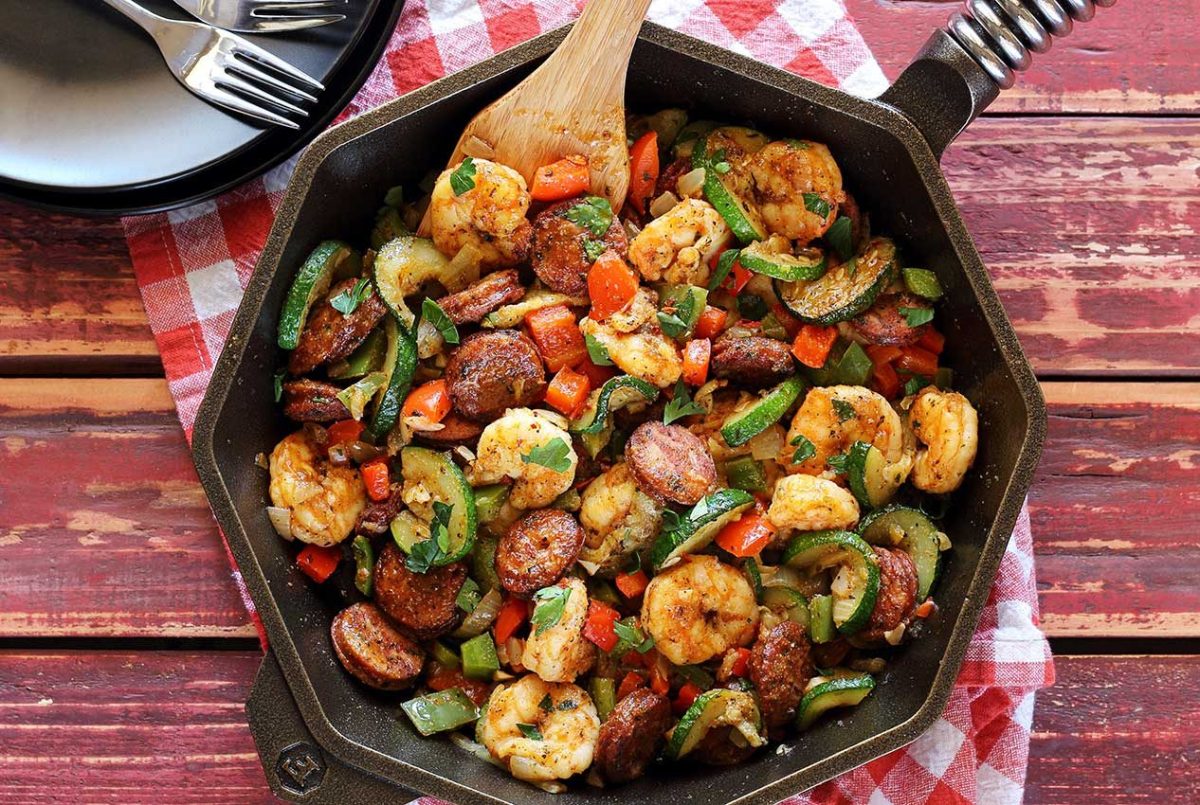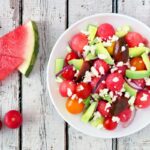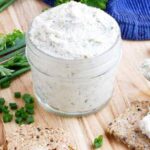Embark on a culinary adventure with vibrant, flavorful Paleo curries that are surprisingly quick and easy to make! Forget lengthy prep times and complicated techniques; this guide unlocks the secrets to creating authentic, healthy, and incredibly delicious Paleo curries, perfect for busy weeknights or special occasions. Discover three distinct curry profiles – Thai Green, Indian Masala, and Malaysian Rendang – each bursting with unique aromatic spices and nutritious ingredients. Learn simple yet effective techniques to master the art of Paleo curry, from perfectly balanced spice blends to achieving the ideal creamy texture. Prepare to tantalize your taste buds and nourish your body with these satisfying and wholesome meals.
We’ll explore the nutritional powerhouse of paleo-friendly ingredients, highlighting their health benefits and unique flavor contributions. From selecting the finest coconut milk to mastering the art of plating, this guide provides a comprehensive yet accessible approach to creating stunning and flavorful Paleo curries. Get ready to elevate your culinary skills and impress your family and friends with these exciting and healthy recipes.
Recipe Variations
The beauty of Paleo curries lies in their adaptability. By swapping out key ingredients and spice blends, you can create a world of flavor profiles, each with its unique nutritional benefits and vibrant character. Let’s explore three distinct Paleo curry recipes, showcasing the versatility of this ancient cooking method.
Paleo Curry Recipe Variations
| Dish Name | Ingredients | Summary | Cooking Time |
|---|---|---|---|
| Thai Green Curry | Coconut milk, green curry paste (made with lemongrass, galangal, green chilies, cilantro, and kaffir lime leaves), chicken or beef, broccoli, bell peppers, zucchini, fish sauce (optional), lime juice. | A vibrant, fragrant curry with a creamy coconut base and a bright, herbaceous flavor profile. The heat level is adjustable based on the amount of green chilies used. | 30 minutes |
| Indian Masala Curry | Coconut oil, onion, garlic, ginger, garam masala (a blend of cumin, coriander, turmeric, cinnamon, cloves, cardamom, and black pepper), tomatoes, cauliflower, chickpeas, spinach, chicken or lamb. | A rich and warming curry with a complex blend of spices. The combination of warming spices and hearty vegetables creates a satisfying and flavorful dish. | 45 minutes |
| Malaysian Rendang | Coconut milk, beef, lemongrass, galangal, ginger, turmeric, chilies, kaffir lime leaves, shallots, garlic, candlenut (optional), fish sauce (optional). | A slow-cooked, intensely flavorful curry with tender beef and a rich, aromatic sauce. The long cooking time allows the flavors to meld beautifully, resulting in a deeply satisfying dish. | 1.5 – 2 hours |
Spice Blend Visualizations
Imagine three distinct palettes:
Thai Green Curry: A vibrant green blend, dominated by finely chopped bright green chilies, their fiery red seeds visible amongst the pale green of finely sliced lemongrass and galangal. Small, dark green kaffir lime leaves are scattered throughout, adding a citrusy aroma. A sprinkle of vibrant green cilantro adds a fresh, herbaceous note.
Indian Masala Curry: A warm, earthy brown blend. Deep brown cumin and coriander seeds are prominent, interspersed with the golden-orange of turmeric, the deep red-brown of cinnamon sticks, and the dark brown of cloves. The lighter green of cardamom pods provides a subtle contrast, while the small black peppercorns add a hint of spice.
Malaysian Rendang: A deep reddish-brown blend, with the rich color of turmeric dominating. Thinly sliced red chilies add vibrant flecks of color, alongside the pale yellow-green of finely minced galangal and lemongrass. The deep brown of shallots and garlic adds depth and richness, creating a visually appealing and complex spice mixture.
Nutritional Benefits of Paleo Curry Variations
Each curry variation offers unique nutritional benefits due to the Paleo-friendly ingredients. The Thai Green Curry, rich in coconut milk, provides healthy fats and electrolytes. The abundance of vegetables contributes essential vitamins and minerals. The Indian Masala Curry, with its blend of spices, offers anti-inflammatory and antioxidant properties thanks to turmeric, ginger, and other spices. The chickpeas provide protein and fiber. Finally, the Malaysian Rendang, featuring lean beef, offers a good source of protein, while the coconut milk and vegetables provide healthy fats and micronutrients. The long cooking time in the Rendang also helps break down tough connective tissues in the beef, making it easier to digest.
Step-by-Step Guide
Crafting a quick and flavorful Paleo chicken curry is surprisingly straightforward. This guide breaks down the process into manageable steps, allowing you to enjoy a delicious and healthy meal without spending hours in the kitchen. The focus is on efficiency without sacrificing the vibrant tastes and textures that define a truly satisfying curry.
This recipe prioritizes speed and simplicity while maintaining the rich, complex flavors characteristic of a well-made curry. We’ll explore time-saving techniques and offer substitutions to adapt the recipe to your preferences and dietary needs.
Preparing the Aromatics and Base
The foundation of any good curry lies in its aromatic base. Building this foundation correctly sets the stage for a truly flavorful dish. Proper preparation of the aromatics unlocks their full potential, contributing to a rich and complex taste profile.
- Finely chop one large onion, two cloves of garlic, and one inch of ginger. The finer the chop, the more evenly the flavors will distribute throughout the curry.
- Heat one tablespoon of coconut oil in a large pan or Dutch oven over medium heat. Coconut oil provides a subtle sweetness and enhances the overall flavor profile.
- Sauté the onions until softened and translucent, about 5 minutes. This allows the onions to caramelize slightly, deepening their flavor.
- Add the garlic and ginger and sauté for another minute until fragrant. Be careful not to burn the garlic and ginger, as this can impart a bitter taste.
- Stir in one tablespoon of curry powder, half a teaspoon of turmeric, and a quarter teaspoon of cayenne pepper (adjust to your spice preference). The combination of spices creates a warm and complex flavor base.
Adding Protein and Vegetables
Adding the protein and vegetables is a crucial step in building layers of flavor and texture. The order in which you introduce these ingredients affects the final outcome, ensuring that everything cooks evenly and retains its optimal texture.
- Add 1.5 pounds of boneless, skinless chicken thighs, cut into bite-sized pieces. Chicken thighs are more flavorful and stay moist during cooking compared to chicken breasts.
- Stir to coat the chicken evenly with the spice mixture. Ensure each piece is well-seasoned for consistent flavor.
- Add one cup of chopped cauliflower, one cup of chopped broccoli, and half a cup of chopped bell peppers (any color). These vegetables add texture and nutritional value.
- Stir everything together and cook for about 8-10 minutes, until the chicken is cooked through and the vegetables are tender-crisp. Avoid overcooking the vegetables, as this can make them mushy.
Simmering and Finishing Touches
The simmering process allows the flavors to meld and deepen, creating a harmonious blend of spices and ingredients. Adding the finishing touches elevates the curry to a culinary masterpiece. This final step transforms the dish from a simple preparation to a sophisticated culinary experience.
- Pour in one can (13.5 oz) of full-fat coconut milk. Coconut milk adds richness and creaminess to the curry.
- Stir well to combine all ingredients. Ensure that everything is evenly distributed in the sauce.
- Simmer for 5-7 minutes, allowing the flavors to meld. Do not boil, as this can cause the coconut milk to separate.
- Season with salt and pepper to taste. Adjust the seasoning to your preference.
- Garnish with fresh cilantro or chopped green onions before serving. Fresh herbs add a vibrant pop of color and flavor.
Adapting the Recipe
The beauty of this recipe lies in its adaptability. Substituting different proteins and vegetables allows for endless variations, catering to diverse tastes and dietary needs. Experimentation is key to discovering your personal favorite combinations.
- Beef: Substitute the chicken with 1.5 pounds of beef stew meat, cut into bite-sized pieces. Increase the cooking time to ensure the beef is tender.
- Pork: Use 1.5 pounds of pork shoulder, cut into bite-sized pieces. Pork shoulder is flavorful and becomes incredibly tender during the simmering process.
- Tofu: For a vegetarian option, use 14 ounces of firm or extra-firm tofu, pressed and cubed. Add the tofu during the last 5 minutes of cooking to prevent it from breaking apart.
- Vegetable Variations: Feel free to experiment with other vegetables like spinach, mushrooms, zucchini, or green beans. Add them during the last few minutes of cooking to retain their texture.
Troubleshooting & FAQs

Paleo curries, while incredibly flavorful and healthy, can present a few challenges for even experienced cooks. Understanding common pitfalls and having solutions readily available will ensure your curry journey is smooth and delicious. This section addresses frequent issues and provides expert tips to help you achieve perfectly textured and intensely flavorful Paleo curries every time.
Overly Thick Curry
An overly thick curry can be easily remedied. The most common cause is simply too much liquid reduction during cooking. To prevent this, add liquid gradually throughout the cooking process, monitoring the consistency. If your curry is already too thick, carefully whisk in a little coconut milk or bone broth to achieve the desired consistency. Remember, a slightly thinner curry is often more palatable and easier to serve. Avoid adding too much liquid at once, as this can dilute the flavors. Instead, add a small amount at a time, stirring constantly until the desired consistency is reached.
Bland Curry Flavor
A lack of flavor in your Paleo curry often stems from inadequate seasoning or insufficient cooking time for the spices to bloom and release their full aromatic potential. To enhance the flavor profile, ensure you’re using high-quality spices and adding them at the appropriate stages of the cooking process. Toasting whole spices before grinding them significantly intensifies their flavor. Don’t be afraid to experiment with different spice blends and additions like fresh herbs, ginger, or garlic to create complex layers of taste. Consider adding a squeeze of lime juice or a splash of apple cider vinegar at the end to brighten the flavors.
Burning Curry
Burning is often a result of high heat and insufficient stirring. Always use medium-low heat when cooking curries, particularly those containing coconut milk, which can burn easily. Consistent stirring prevents sticking and burning on the bottom of the pan. If you notice your curry starting to stick, immediately reduce the heat and stir vigorously. Using a thicker-bottomed pot or pan also helps distribute heat more evenly and reduces the risk of burning. Non-stick cookware, while convenient, may not be ideal for Paleo cooking due to potential chemical leaching.
Frequently Asked Questions
| Question | Answer |
|---|---|
| Can I use other vegetables besides the ones listed in the recipe? | Absolutely! Feel free to experiment with a wide variety of Paleo-friendly vegetables like cauliflower, broccoli, zucchini, or bell peppers. Consider their cooking times, adding firmer vegetables earlier in the process. |
| How can I store leftover Paleo curry? | Store leftover curry in an airtight container in the refrigerator for up to 3 days. Allow it to cool completely before refrigerating to prevent bacterial growth. |
| What if I don’t have coconut milk? | While coconut milk adds richness and creaminess, you can substitute it with full-fat coconut cream or even bone broth for a lighter curry. |
| Can I make this curry ahead of time? | Yes! In fact, the flavors often meld beautifully overnight. Prepare the curry a day or two in advance for an even more intense flavor profile. |
| My curry is too spicy! What can I do? | Add a dollop of coconut milk or a spoonful of plain yogurt (if not strictly Paleo) to temper the heat. Sweeteners like a touch of maple syrup can also help balance the spice. |
Creating delicious and healthy Paleo curries doesn’t have to be a daunting task. This guide has equipped you with the knowledge and techniques to confidently whip up flavorful and satisfying meals in minutes. From mastering the art of blending spices to achieving the perfect consistency, you now possess the tools to explore the diverse world of Paleo curries. Remember to experiment with different proteins, vegetables, and serving suggestions to personalize your culinary creations. So, unleash your inner chef, embrace the vibrant flavors of Paleo cuisine, and enjoy the rewarding experience of creating stunning and delicious meals that nourish your body and soul.
Questions Often Asked
Can I use different protein sources besides chicken?
Absolutely! Beef, pork, lamb, tofu, or even shrimp can be easily substituted for chicken in these recipes. Adjust cooking time as needed depending on the protein.
How can I thicken my curry if it’s too thin?
Simmer the curry uncovered for a longer period to reduce excess liquid. Alternatively, you can add a tablespoon or two of coconut flour or arrowroot powder mixed with a little cold water to thicken the sauce.
What if my curry is too spicy?
Add a dollop of coconut milk or a squeeze of lime juice to help balance the heat. A spoonful of plain yogurt or a little honey (if you tolerate it) can also help mellow the spice.
Can I make the curry ahead of time?
Yes, Paleo curries often taste even better the next day! Store leftovers in an airtight container in the refrigerator for up to 3 days.
Where can I find high-quality paleo-friendly ingredients?
Look for ingredients at farmers’ markets, health food stores, or online retailers specializing in organic and ethically sourced products. Prioritize quality ingredients for the best flavor and nutritional value.


